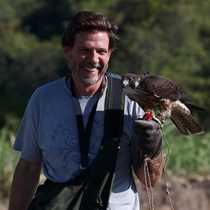The new day greeted us as we headed south towards the most remote island of the Gulf of California. San Pedro Mártir is a fascinating volcanic plug that emerges from the heart of the Gulf. This island is quite unknown by most, due to its remoteness, and it is rare that people recognize the island as the largest blue-footed booby colony in the world. Not only boobies nest here, but also a great number of pelicans, gulls, and red-billed tropicbirds. The shorelines of San Pedro Mártir are home to a large number of California sea lions that live here all year-round.
We embarked our expedition landing craft early in the morning, and cruised through the dramatic shorelines lined by cliffs and site of stories of guano miners. Evidence of human history is present throughout the island, written with rock walls that were built on the escarpments of the island. By the late 1880's guano became a valuable commodity, and several islands in the Gulf of California were heavily mined for the nitrate-rich substrate.
As we left the friendly sea lions and myriad of birds behind to continue our way south, a large group pf bottlenose dolphins joined us to play. We estimated about two hundred of these cetaceans in the group that leaped into the air and rode our bow and wake. This was just the prelude to the next group of marine mammals that we found. A pod of pilot whales was seen a couple hours after we left San Pedro Mártir behind.







